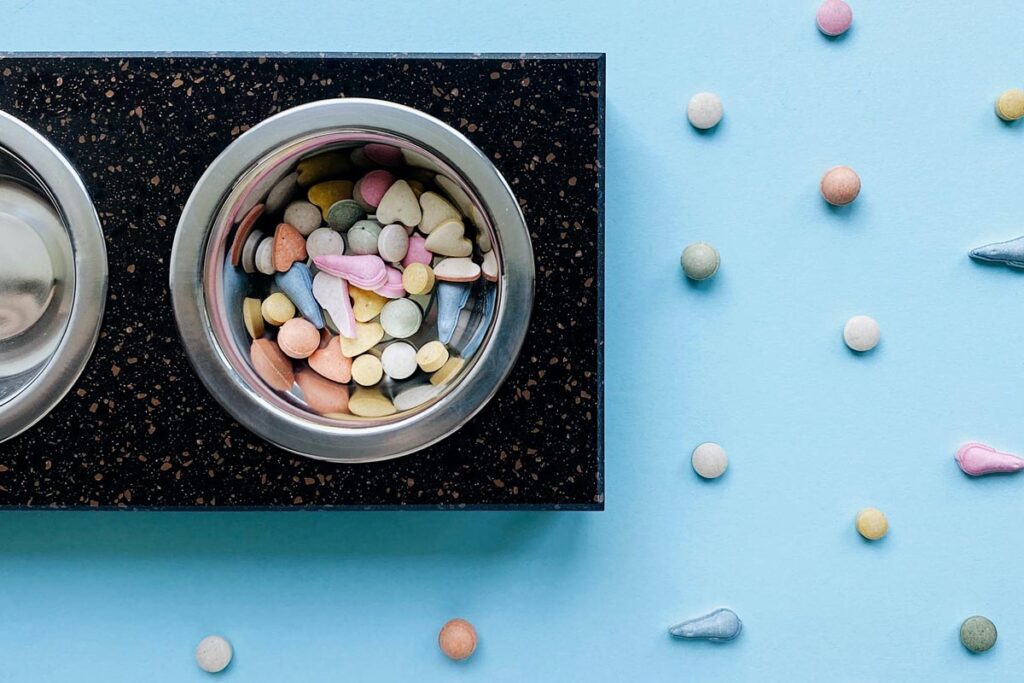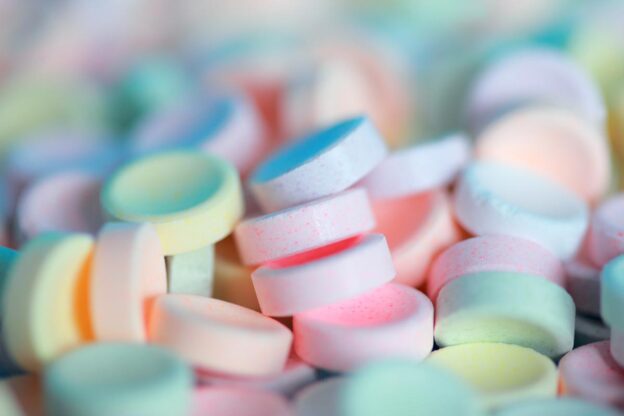Rainbow fentanyl came to the attention of the media in August of 2022, when the DEA published a press release on the trend. The drug, which is standard fentanyl but with colorful dye added, was purportedly being used to make fentanyl pills more attractive to kids and young people. While it’s unlikely that that’s the case, as few drug dealers deliberately target groups that don’t have buying power. Instead, the brightly colored fentanyl pills and powder known as “rainbow fentanyl” are more likely to be targeted to ravers and clubs, where bright colors may make those pills more novel. In either case, rainbow fentanyl is exactly the same as “standard” fentanyl purchased on the street, except with the addition of dye.
However, rainbow fentanyl has numerous myths and misconceptions around it.
What is Fentanyl
Fentanyl is a synthetic opioid that is typically about 50 to 100 times the strength of morphine. This drug is used in medical settings as a powerful painkiller, typically following surgery. However, it’s increasingly common in street drugs, where the high strength and easy synthetization of the drug make it popular for drug dealers.
At the same time, the high potency of fentanyl means it’s extremely dangerous to users. In 2021, fentanyl contributed to over 74% of all opioid-related overdoses – sometimes even when users weren’t aware they were taking fentanyl. And, with 150+ people dying of a fentanyl overdose every day, fentanyl causes more overdoses and deaths than any other illicit drug.
That’s important, because the high strength of fentanyl means that a dose can be as small as about 15-20 grains of table salt. Someone dosing themselves may be unaware of how much they can take – resulting in an overdose. In addition, even illicit fentanyl pills or fake pain pills can be dosed too high, as these drugs are manufactured without regulation, quality oversight, or controls to ensure dosage remains consistent or safe.
What is Rainbow Fentanyl
Rainbow fentanyl is a name that specifically refers to fentanyl pills and powder sold in colorful packaging. Here, the drug manufacturer deliberately avoids creating an artificial pain pill and instead deliberately makes their drug as a party drug. Fentanyl pills have been found in bright colors of purple, blue, yellow, green, and pink. In some cases, these pills are sold as Oxycodone M30 pills or under other names. However, they almost always contain fentanyl, a filler agent, and a colorful dye. In some cases, the original colors are also intended to mimic the colors of real prescription medication, like Xanax. In other cases, the drugs are just colorful for the sake of being colorful.
In either case, the contents of the drug are the same – although DEA testing shows that actual quantity of fentanyl can vary significantly from pill to pill. In fact, the DEA showed that 6 out of every 10 fake pills contains more than the 2 milligrams of fentanyl required to be lethal to someone with no tolerance built up. This means that those colorful fentanyl pills could be a fatal dose to someone tempted to try one because they look like fun party drugs.
Get Your Questions Answered Now
Misconceptions About Rainbow Fentanyl
Rainbow fentanyl is widely shared in the media, especially after the DEA was quoted as saying it could be used to deliberately target kids. This has led to many misconceptions:

Rainbow Fentanyl is Deliberately Targeting Kids – That may be the case, however, it’s more likely that rainbow fentanyl is just dyed to make it more attractive or to stand out from competitors. Fentanyl pills are often advertised online to club-goers and party-goers and adding color makes the pills more attractive. However, if your kids use social media without supervision, they could be exposed to these advertisements. In addition, if someone brings rainbow fentanyl to school, it may be more likely that kids will take those pills if they are brightly colored and fun rather than looking like medication.
Different Colors Have Different Effects – DEA testing shows that there are no discernable differences between rainbow fentanyl colors. However, there are significant randomized differences between rainbow fentanyl pills. The dosing between one pill and another can range from 0.5 to 2.5 or more milligrams. This means that a pill may have only minor effects – resulting in someone wanting to take another – or it may contain a potentially lethal dose. This is a side-effect of illicit manufacturer, because there is no regulation to ensure that pills are manufactured safely or according to quality standards. The only way to ensure fentanyl pills are safe is to never take any that are not prescribed to you by a doctor. This is important as even pills that look genuine may be knock-offs.
Pills are Safer than Powder – Many people choose to buy knock-off pills rather than taking fentanyl in another form. However, that is only the case if you’re taking a prescription pain pill, prescribed by your doctor, and picked up from a pharmacy. Illicit manufacture means unregulated manufacture, so you have no idea what is in the pills, what the dosage is, or even what the fillers are. For all you know, the pill contains no fentanyl at all, over 2 mg of fentanyl and baby powder, or any other combination of substances. It’s also increasingly true that fentanyl is used to manufacture “fake” prescription drugs like Vicodin and Xanax, even when those drugs don’t actually contain opioids at all.
If you suspect that a loved one is using rainbow fentanyl, it’s important to keep in mind that it is not safe. Rainbow fentanyl is the same as any other illicitly manufactured fentanyl except it has colored dye added to the pills. Without safe manufacture, you have no way to know what’s in those pills, how big each dose is, if the dosage is the same between pills, or what’s used as a filler for the pills. That makes using rainbow fentanyl as dangerous as injecting fentanyl from another source – even though it might look safer. There is no safe way to use fentanyl recreationally. If your loved one is, it’s important to talk to them about their drug usage, to get Narcan in case they have an overdose, and to try to move them towards going to treatment, where they can undo the damage caused by substance abuse.
If you or a loved one is seeking help for alcohol or other substance abuse, contact us at Stairway Resource Center today. At Stairway Resource Center we provide a 60 to 90-day outpatient program that takes place in an engaging and supportive community setting. We offer dual diagnosis treatment and daily group and individual therapy for our clients, in addition to fun community-based events and activities.

